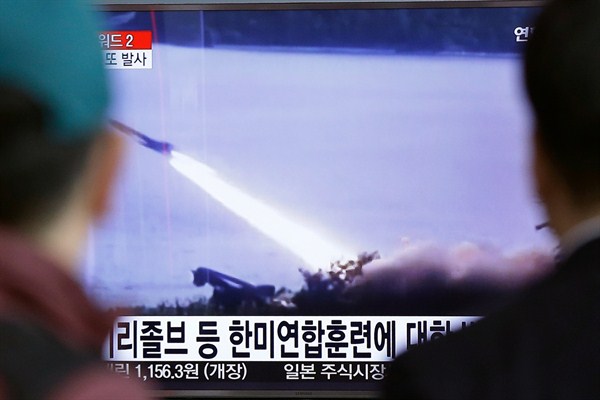This week, all eyes are focused on the twin bombings in Brussels linked to the self-declared Islamic State. But despite the death toll there, and in the Paris attacks last November, a bigger risk to the world’s stability lurks in East Asia. The Islamic State may no longer be the ‘junior varsity’ of terrorism, as President Barack Obama once referred to the group, but it remains the junior varsity of global threats. North Korea is the varsity, and the danger it poses far exceeds the sociopathic but small-scale killing that the Islamic State can pull off or inspire.
Now under the third generation of the Kim family’s dictatorship, North Korea has mastered the use of provocative, hysterical and at times violent behavior to distract its people from their miserable existence and the parasitism of their rulers. Pyongyang also uses these tactics to wrangle economic concessions from other nations, and to gain global attention beyond what its actual importance justifies. The first two members of the dictatorial dynasty, Kim Il Sung and Kim Jong Il, became skilled at this game. The worry is that Kim Jong Un, North Korea’s current tyrant, lacks the savvy and sense of reality of his forebears. He may not know when to back off, instead believing that he can intimidate South Korea, Japan and the United States, and that China will continue to protect him no matter how far he goes. There are also signs of growing internal dissent, most importantly among the military elite that has sustained the Kim dynasty. Asia has entered very dangerous times.
After a relatively quiet few months toward the end of 2015, Kim renewed his provocations and tantrums in 2016, starting with a “tirade of abuse” against South Korean President Park Geun-hye. On Jan. 6, 2016, North Korea tested another nuclear weapon, which led to increased international sanctions. In February, the Kim regime launched a rocket that used prohibited ballistic missile technology. In early March, U.S. and South Korean military forces began their annual military exercise to practice stopping North Korean aggression. The exercises were the largest since 2010, involving more than 15,000 American troops and 300,000 South Koreans. They included U.S. Marines stationed in Okinawa and a newly formed commando unit designed for deep operations in North Korea, who, according to South Korean media reports, drilled on plans to pre-empt North Korea’s use of nuclear weapons.

